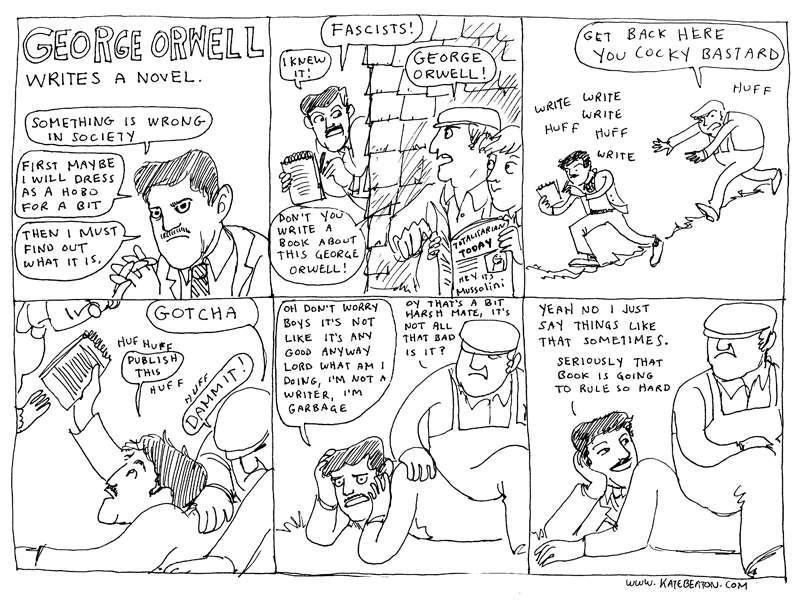A short story is like a kiss in the dark from a stranger.
Stephen King
Official website of the author
A short story is like a kiss in the dark from a stranger.
Stephen King
Magnified 10 times, a view of Dolichopodid sp. (fly) eyes made by Laurie Knight of Tonbridge, Kent, UK.
“The Nikon International Small World Photomicrography Competition recently announced its list of winners for 2010. The competition began in 1974 as a means to recognize and applaud the efforts of those involved with photography through the light microscope.” (via)
When I was a child, I thought,
Casually, that solitude
Never needed to be sought.
Something everybody had,
Like nakedness, it lay at hand,
Not specially right or specially wrong,
A plentiful and obvious thing
Not at all hard to understand.
Then, after twenty, it became
At once more difficult to get
And more desired — though all the same
More undesirable; for what
You are alone has, to achieve
The rank of fact, to be expressed
In terms of others, or it’s just
A compensating make-believe.
Much better stay in company!
To love you must have someone else,
Giving requires a legatee,
Good neighbours need whole parishfuls
Of folk to do it on — in short,
Our virtues are all social; if,
Deprived of solitude, you chafe,
It’s clear you’re not the virtuous sort.
Viciously, then, I lock my door.
The gas-fire breathes. The wind outside
Ushers in evening rain. Once more
Uncontradicting solitude
Supports me on its giant palm;
And like a sea-anemone
Or simple snail, there cautiously
Unfolds, emerges, what I am.
(1951)
It feels important to remind ourselves, at this point, that Facebook, our new beloved interface with reality, was designed by a Harvard sophomore with a Harvard sophomore’s preoccupations. What is your relationship status? (Choose one. There can be only one answer. People need to know.) Do you have a “life”? (Prove it. Post pictures.) Do you like the right sort of things? (Make a list. Things to like will include: movies, music, books and television, but not architecture, ideas, or plants.) But here I fear I am becoming nostalgic. I am dreaming of a Web that caters to a kind of person who no longer exists. A private person, a person who is a mystery, to the world and—which is more important—to herself. Person as mystery: this idea of personhood is certainly changing, perhaps has already changed.

While stumbling around the web the other day, I came across the still-life paintings of Christopher Stott and was instantly smitten. Stott’s compositions are very sparse, usually just two or three ordinary objects grouped together against a neutral white background, drenched in sunlight. I have not seen them in person, but to judge from the images on the web his technique is very precise, almost photographic. He handles light beautifully. Even from a distance you can tell that much. But these are so much more than technical exercises or pretty pictures. The paintings I like best are little stories. They show ordinary objects with the patina of age and long use — battered old books, chairs, alarm clocks, suitcases — suggesting the rich stories and lives they have led. The painting above, “Three Vintage Fans” (2010), reminds me of a family — a father and two sons, say. The father is turning to share a moment with his mischievous younger son while the oldest boy looks straight into the camera, dutifully holding his pose. Obviously I am projecting my own life onto these inanimate things; that’s the magic of it. That is what the best still lifes do. They help you see the things around you in a new way. They make you stop and really look.
Chris has graciously allowed me to use one of his paintings to illustrate the home page of this web site. It is a lovely, inspiring invitation to the writing life. Until I sell a few more books, I will have to settle for “owning” one of his paintings this way. (But you don’t have to, I hope.)
Check out Christopher Stott’s paintings at his web site or Flickr feed.
A study uses negative book reviews to test the old saw that “all publicity is good publicity.” The result: for the most part, it is better to be trashed by the Times than ignored by it.
A crucial factor, they concluded, is how familiar a brand or product or other entity was before the negative publicity. Crunching data that cross-matched book sales against critics’ appraisals in The New York Times Book Review, they found that negative reviews of a new book by an “established” author hurt sales. “For books by relatively unknown (new) authors, however, negative publicity has the opposite effect,” increasing sales by 45 percent over their expected sales trajectory, they write. Evidently this boils down to increased awareness: the mere act of introducing something to a broader public — even by saying that it stinks — increases the chances that more members of that public will want it anyway.
Follow-up studies pointed out that as time passes, we may not remember the context in which we heard of something (a pan); we just know it’s familiar.
This afternoon at a crowded Starbucks in Back Bay — where I was writing furiously to finish my latest rewrite while gorging myself with pumpkin scones — there was a homeless man sitting alone in one of the burgundy plush chairs. He had the typical homeless look: scraggly hair, sunken eyes, windburned skin, ragged army jacket, patinaed head to toe with dirt. But he was also handsome in a down-and-out way. He had a thin face with dignified features. His nose was as narrow as a shark’s fin. When he smiled, his teeth were very straight and white. There were laugh lines around his eyes and mouth which, if he were a banker or lawyer, would have seemed very distinguished.
This man was carrying on an animated conversation with an imaginary friend, who seemed to be sitting by the man’s left knee. The man would turn to his invisible friend and say, “It was a gentleman’s agreement.… Spartacus was the leader of the Anatolians.… It was Johnson was the leader then.… I told him, ‘Don’t do it,’ but he wouldn’t listen.” As I was only hearing half of the conversation, I can’t say what tied these sentences together. He kept repeating the phrase “it was a gentleman’s agreement” over and over; he seemed to be telling his friend a story about how he’d been stiffed somehow. (What part Spartacus and his brave Anatolians played in the whole thing is anybody’s guess.)
What set this man apart from the usual crazy, murmuring homeless guy was how well he acted the part of a man in conversation. He listened attentively while his imaginary friend spoke. He nodded and smiled. When his friend made a joke (apparently), he pointed and grinned appreciatively: good one. He spoke in an ordinary, natural conversational tone, with the sort of expressive gesturing you see in a lot of hand-talkers. And he did all this without acknowledging the crowd of customers on every side of him.
I watched this performance furtively, avoiding eye contact, ducking down behind my laptop, and I thought, How sad, a crazy homeless guy talking to himself.
Then it occurred to me that I was writing dialogue, too. Specifically, I was imagining a conversation among four fictional characters, all of whom I have described in elaborate, fastidious, lunatic detail over the course of five hundred or so double-spaced pages, a project that has taken me the better part of three years now.
Then the homeless man left, and I was the only crazy one.

Via. (Click image to view full size.)